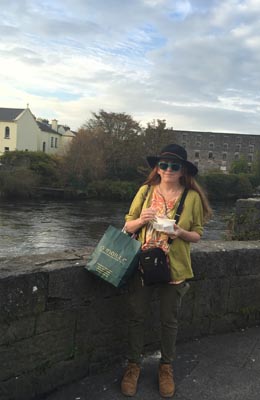Home › Forum topic › Rare Plant Reintroduction › What are your preferred methods for fungal baiting of mycorrhizal capture for terrestrial orchids?
-
AuthorPosts
-
May 3, 2019 at 11:51 am #394
 Emily CoffeyCPC Conservation Officer
Emily CoffeyCPC Conservation Officer
Looking to see what success different people have had with techniques to capture mycorrhizae for symbiotic micropropagation.
Attachments:
You must be logged in to view attached files.July 11, 2019 at 11:06 am #247 Juianne McGuinnessCPC Conservation Officer
Juianne McGuinnessCPC Conservation Officer
Hi Emily – I asked Dennis Whigham to compose a reply to your question: As you know, much of NAOCC’s work has been focused upon isolating, culturing and identifying orchid mycorrhizal fungi. One example of “baiting” we could cite would be the seed packet technique designed by Hanne Rasmussen and Dennis Whigham (and which is illustrated in Bill Brumback’s presentation Soil Seedbank Longevity of a Terrestrial Orchid “ also available in this portal). In this method, seeds are put into something (the original was plankton netting put between the two halves of a plastic slide mount). The seed packets are then buried in the soil (or placed on an appropriate place on a tree for epiphytes) and retrieved at different times. This method enables on to determine how long seeds remain viable in the soil but if germination occurs, there will be protocorms in the seed packet (sometimes seedlings!). The protocorms can be returned to the lab for isolation and identification of the fungal pelotons.
Typically, NAOCC collects roots of orchids (sometimes other parts – e.g., corms – contain the fungus) – which are analyzed in the lab and, if pelotons are present, they are removed, cleaned and put onto various types of agar. If all goes well, the pelotons will ‘germinate’ and the fungus can then be stored and used for micropropagation in a number of ways. The fungi can be grown on agar along with the seeds. The fungi can be placed onto agar along with protocorms. The fungi can be cultured on different media (ground wood, cotton balls) and then placed into pots, flats or beds where the orchids are growing. Techniques are now available to develop probes to sample the soils/substrates to determine if the fungus is present and how much fungus is present.
Much work remains to be done on identification of the specific fungi species – most of the 1000+ isolates in the SERC (NAOCC) lab were “new to science” when isolated. As we collectively build our knowledge base in this arena, it should lead to more studies involving fungal “baiting” and optimal restoration protocols. We look forward to working with you all and other NAOCC collaborators to advance the knowledge base in this area, particularly for North American native orchids.
Here are a few references on the subject:
McCormick, M., Taylor, L.D., Juhaszova, K., Burnett, R.K., Whigham, D.F., & O’Neill, J. (2012). Limitations on orchid recruitment: not a simple picture. Molecular Ecology. 21, 1511–1523. https://doi.org/10.1111/j.1365-294X.2012.05468.x
Brundrett, M.C., Scade, A., Batty, A.L., Dixon, K.W., & Sivasithamparam, K. (2003). Development of in situ and ex situ seed baiting techniques to detect mycorrhizal fungi from terrestrial orchid habitats. Mycological Research. 107 (10). 1210-1220. https://doi.org/10.1017/S0953756203008463.
Khamchatra, N., Dixon, K., Chayamarit, K., Apisitwanich, S. & Tantiwiwat, S. (2016). Using in situ seed baiting technique to isolate and identify endophytic and mycorrhizal fungi from seeds of a threatened epiphytic orchid, Dendrobium friedericksianum Rchb.f. (Orchidaceae). Agriculture and Natural Resources. 50 (1). 8-13. https://doi.org/10.1016/j.anres.2016.01.002.
Rasmussen, H. N. and Whigham, D. F. (1993), Seed ecology of dust seeds in situ: a new study technique and its application in terrestrial orchids. American Journal of Botany. 80. 1374-1378. doi:10.1002/j.1537-2197.1993.tb15381.x
Zi XM, Sheng CL, Goodale UM, Shao SC, Gao JY (2014) In situ seed baiting to isolate germination-enhancing fungi for an epiphytic orchid, Dendrobium aphyllum (Orchidaceae). Mycorrhiza 24:487–499
-
AuthorPosts
- This topic has 1 reply, 2 voices, and was last updated 6 years, 1 month ago by
 Juianne McGuinness.
Juianne McGuinness.
- You must be logged in to reply to this topic.